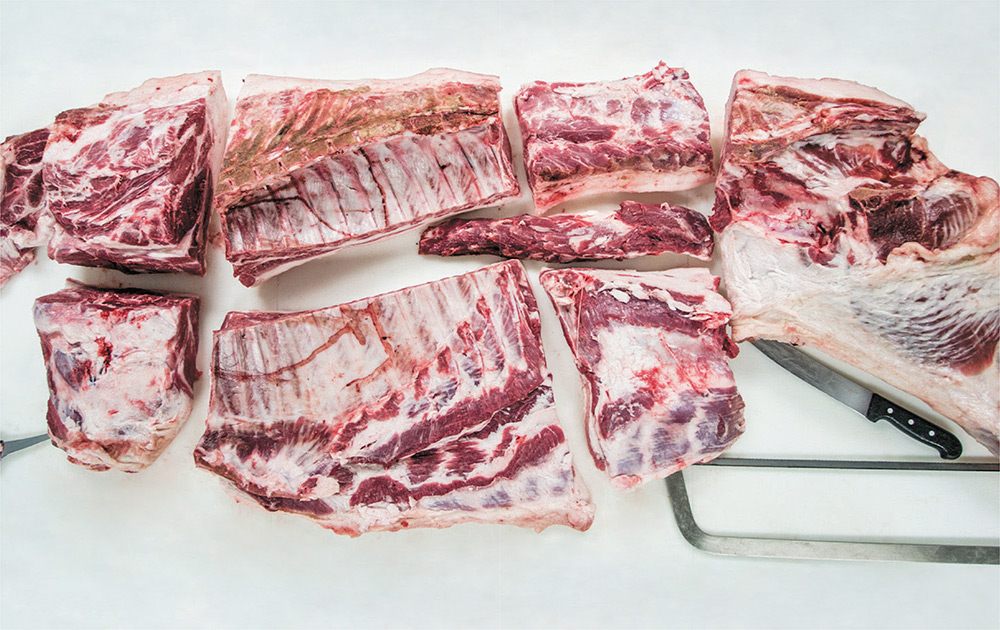
INTRODUCTION
THE MAGNITUDE OF MEAT
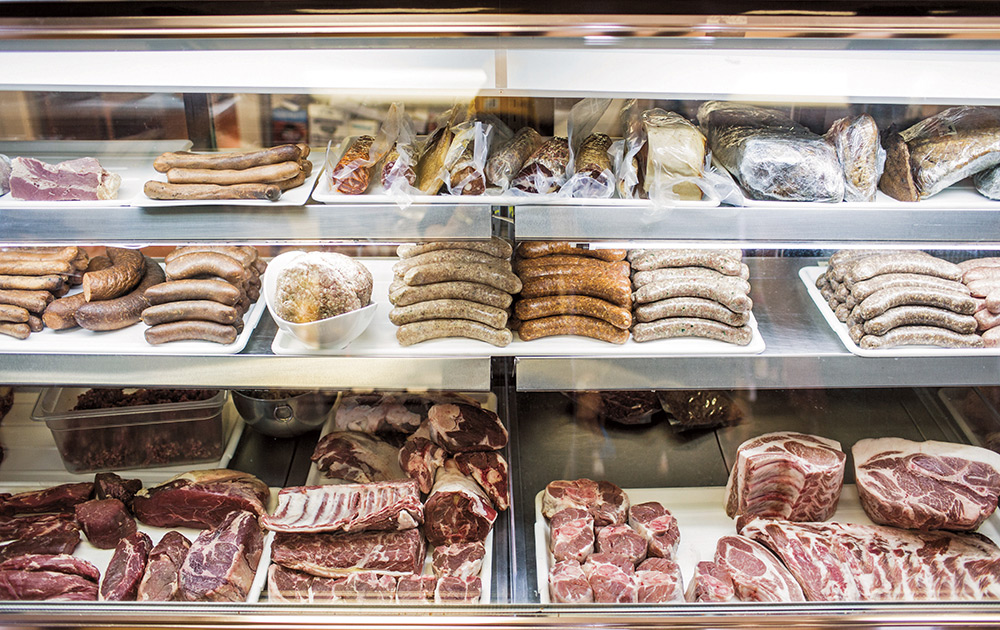
Dating back to Ancient Greece and Rome, sausage served as a way to use up what would have otherwise been discarded meat. By salting, or curing the meat, grinding it together with spices and vegetables, and stuffing it into the intestine of an animal, the Greeks and Romans were able to preserve meat and reduce waste—plus make something delicious.
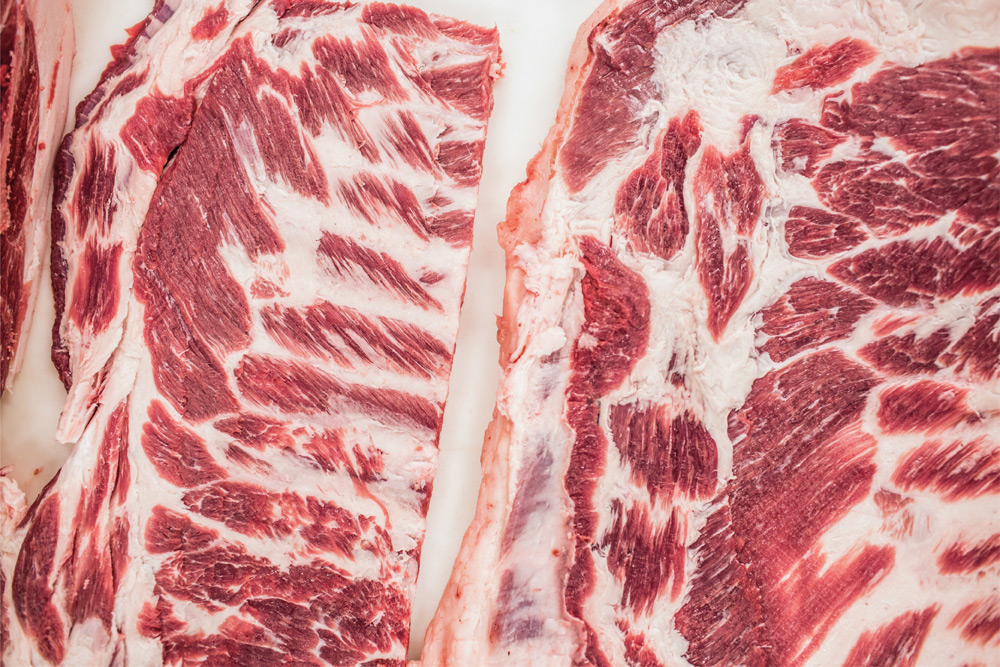
SAUSAGE AS SUSTAINABILITY
In its foundation, sausage was about finding a way to employ every part of the animal instead of wasting it. From salami to loose sausage, pâté, and sausage links, making sausage all boils down to waste reduction and utilization.
Many people think of sausage simply as meat that is ground with spices, stuffed into casings, and then twisted into separate links, but unfortunately, those people are mistaken. Sure, sausage links are likely the most common and familiar form, but bologna, pepperoni, pâté, loose (unstuffed) sausage, and spreadable sausage all fit in to the family as well. Even a meatball is a quickly prepared sausage that home chefs make daily.
Today our knowledge of food and our efficiency of sausage preparation are a far cry from what the Greeks and Romans were working with way back when, but strong and steady remains the foundation of this culinary staple: meat.
QUALITY IS KEY

By definition, the main, and most important ingredient in sausage is meat. So while this makes any cut or kind of meat eligible, remember that a high quality main ingredient produces a high quality final product: cooks are only as good as their starting ingredient.
A lot of people tell us, “I hate liver,” when we urge them to taste our liver pâté, but what they really mean (but don’t know they mean) is “I hate commodity liver.” Ninety-nine percent of the time, when we offer customers a sample of our pâté that was made with liver from happy animals, their eyes widen, and they change their tune.
This is a flawless example of why finding excellent quality meat that comes from happy animals is paramount to making an excellent quality—and most importantly, delicious—sausage.
FINDING A FARMER
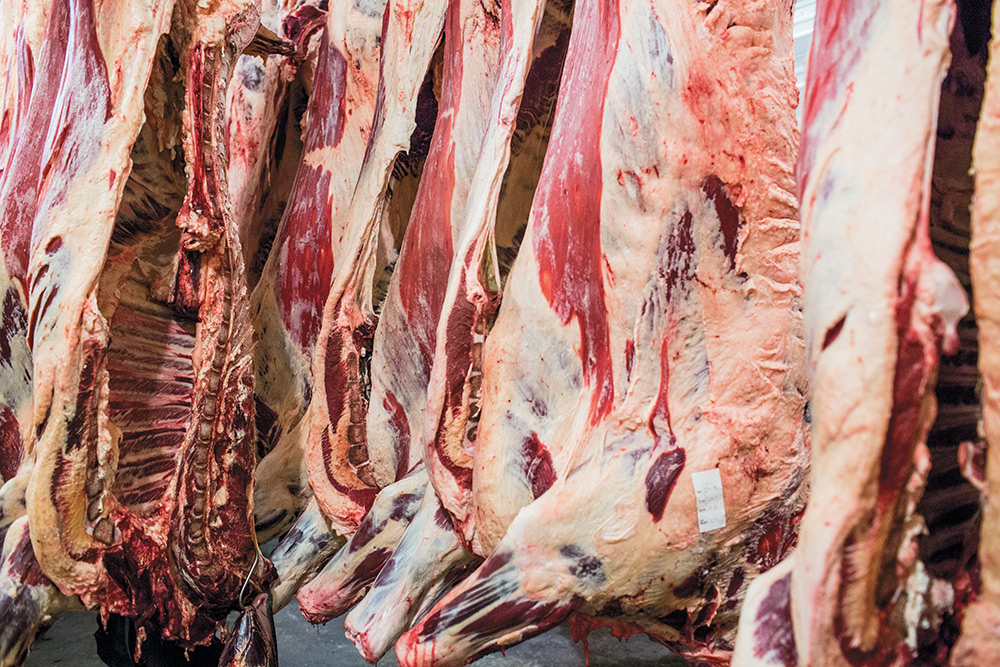
Serving as the foundation of your product, high quality meat is ideal. No matter where you are in the world, the best meat comes from local, responsible, and trustworthy farmers who respect their animals.
So finding a reliable and responsible butcher shop, market, or farmer is probably the most important preliminary step to making sausage.
Animals who are given natural, drug-free lives; who are given real, GMO-free, organic food; and who roam freely on pastures as they were intended, offer the tastiest meat. By eating natural and wholesome food themselves, the animals are healthier and taste closer to what they should taste like: delicious.
Responsible farmers give their animals full access to the outdoors, instead of locking them up in a pen lacking access to grass, fresh air, or sunlight. They don’t pump them with steroids or hormones, they don’t cause the animals to live in a constant state of fear and adrenaline, and they don’t make them live in horrendous and unsanitary conditions. All of which means their meat is healthier, fresher, and best of all, tastier.
At Porter Road Butcher, we exclusively sell responsibly-raised, free-range, steroid- and hormone-free meat because of the quality of taste, and also because of the quality of nutrients. Animals that were raised in concentrated animal feeding operations (CAFO)—the commodity meat that you find at supermarkets—on the other hand, tend to be less colorful, less flavorful, and less nutritious.
What’s more, commodity meat is often previously frozen, which leads to poorer quality. Because muscles (meat) contain ample amounts of water, water turns into ice if the meat is frozen. In turn, the ice crystals cut into the muscle fibers and loosen the muscle. Then when the meat is eventually thawed out, much of that water leaks out onto your counter or cutting board, providing you with a dry, flavorless piece of meat. No thanks.
As the foundation of our business, we’ve formed strong relationships with each of our farmers, ensuring that we know exactly where our meat comes from, and that the products we sell to our customers meet our high standards. Large-scale supermarkets and groceries neither have the same relationships with their suppliers, nor afford their customers the same opportunity.
Although local butcher shops like ours aren’t readily available everywhere, good farmers’ markets and small local grocery stores are great options for finding local and free-range beef, pork, chicken, and lamb, among other regional meats. Asking sustainable or farm-to-table restaurants where they source their meat is also an easy way to locate trusted farmers. We’re willing to bet there’s a good one near you.
MAKING THE CHOICE
Once you’ve made the choice to shop local and buy a product you can trust, then comes the selection: choosing which cut of meat is best.
In commercial sausage-making, large corporations generally stay true to the ancient idea that sausage should be made with leftovers: They use the buttholes, snouts, ears, testicles, and discarded scraps to fill those tubular casings and yes, they reduce waste by doing so.
Sure, that tastes fine. It even tastes good! But when making the stuff yourself, why not choose something better? For example, try an entire pork shoulder or a beef chuck roll in place of already ground meat, made up of God-only-knows-what. Not only does selecting a larger whole piece of meat give you more culinary control, but it also provides you with a consistent product.
Let’s take a look at pork sausage, for example. In lieu of buying ground pork, which is a pre-packaged product that comes from upwards of thousands of hogs and employs all of the previously mentioned parts of the pig on one Styrofoam tray, use one large piece of pork instead. Dice it into cubes, and then grind it for a great finished product.
The bigger the piece of meat you start with, the more control you have over the end result because you can monitor what goes in and what stays out.
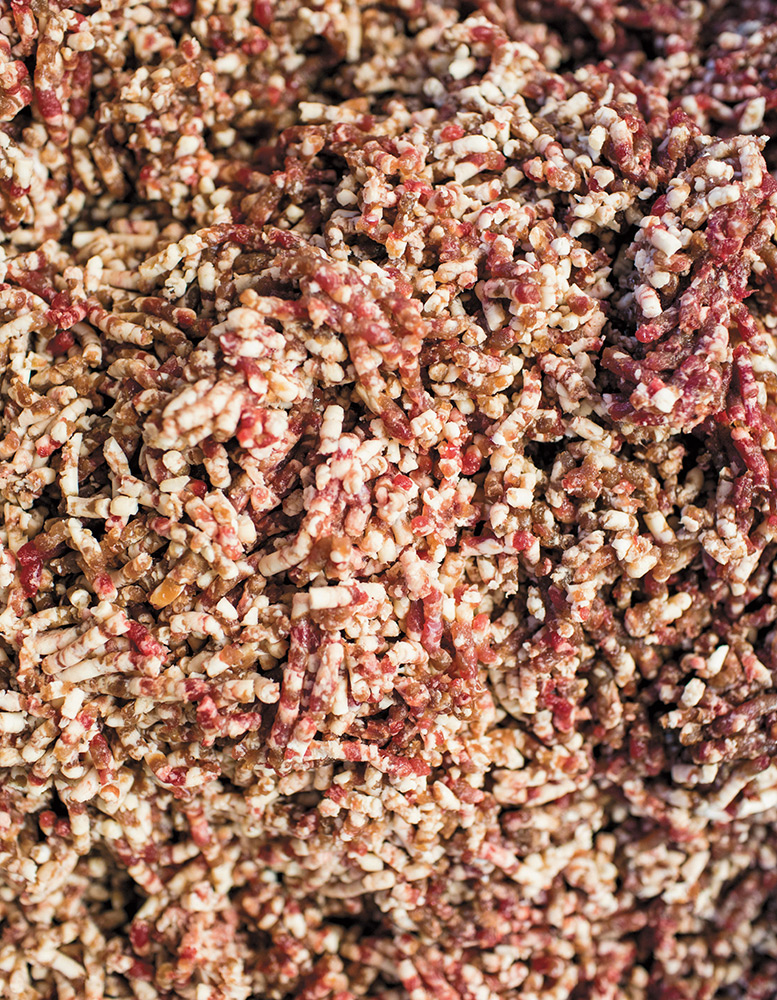
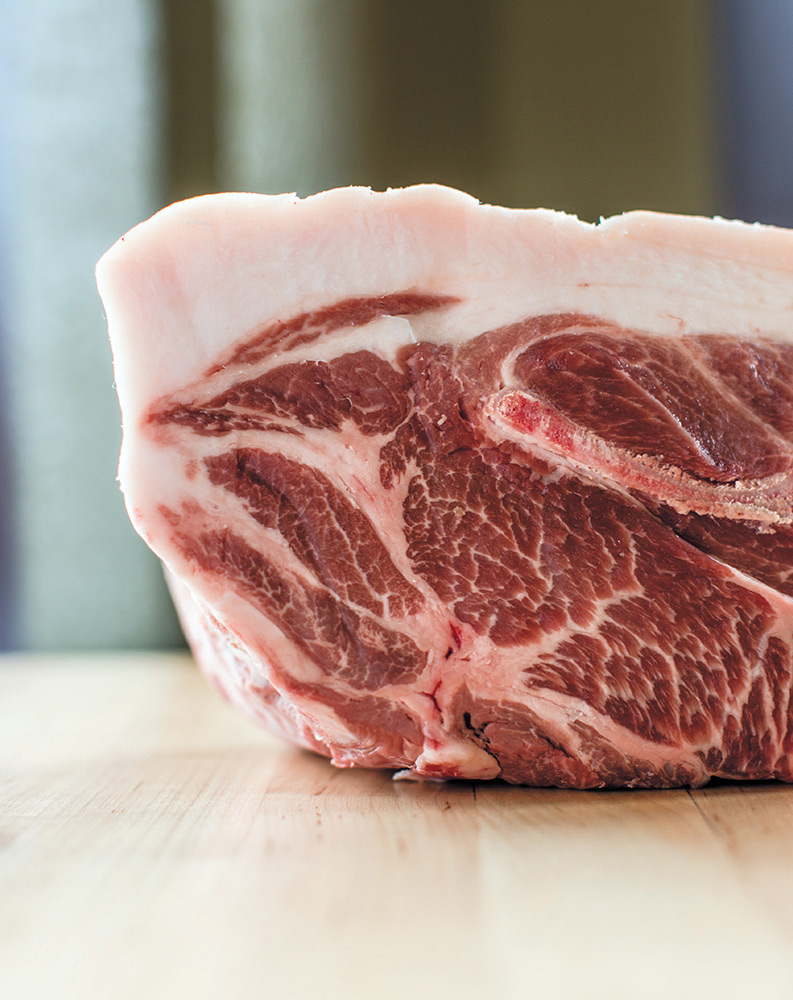
FAT IS YOUR FRIEND
In sausage-making (and cooking in general—but we won’t go all the way into that for the sake of time and space), fat should not be feared. Fat is delicious, and it is a vital ingredient that adds both structure and flavor to sausage.
In general, there are two different kinds of fat on an animal: back fat and lower body fat. Lower body fat is a supple and soft fat that can be heated, rendered down, and turned into tallow (beef) and lard (pork), which are mostly used in cooking and baking, respectively.
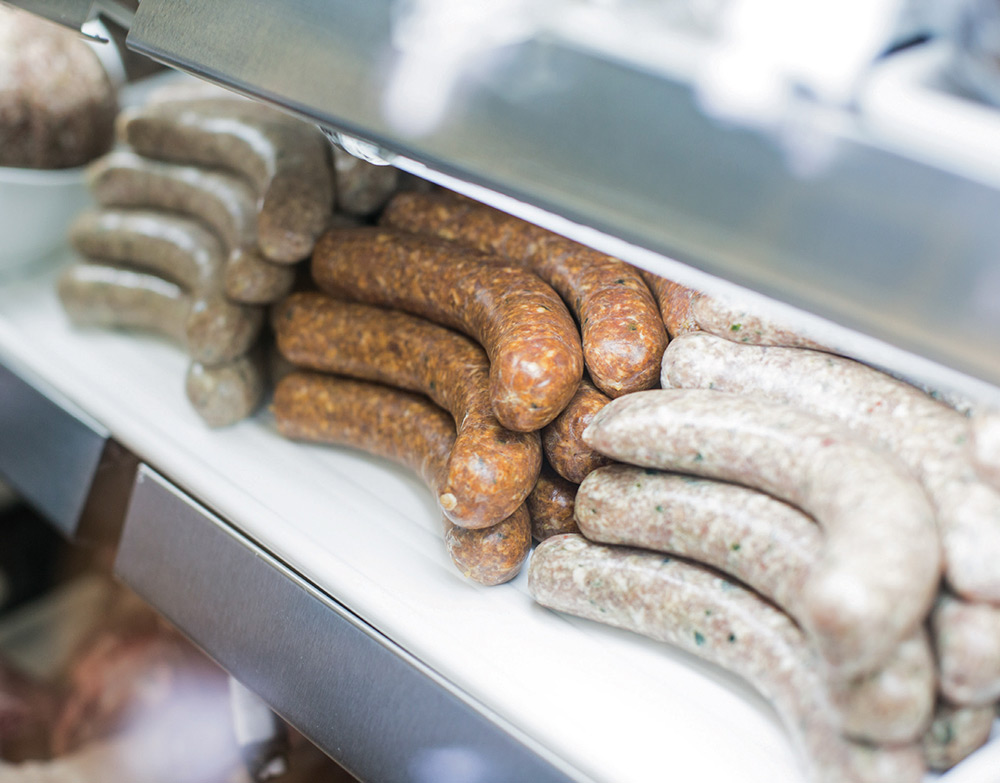
Back fat, however, is not “greasy” like lower body fat, which has a higher water content and therefore melts easily. Back fat has a lower water concentration, which makes it thicker and more resistant to heat, and thus perfect for adding more substance to a sausage link. Those little chunks of fat also make sausage taste even more delicious and incredibly juicy.
For our sausages, we generally use the ratio of 70 percent meat to 30 percent fat. Usually, we just eyeball the ratio, so feel free to do the same. Proportions don’t have to be exact.
Depending on the cut of meat you choose, you may be left with enough fat to satisfy the proper ratio in your sausage. If you find yourself lacking enough fat, however, you can buy back fat from your local butcher shop or farmer, and then dice it up and mix it in with the rest of the ingredients. In making chicken sausages, we substitute good, rich, European-style butter for animal fat.
So don’t fear fat! Befriend it, instead.
GOOD FATS VS. BAD FATS
As we learn more about food every single day, we learn how various items are produced, what benefits they offer, and the problems they can potentially cause. In turn, conflicting information arises and causes confusion for consumers:
Kale is the ultimate “super food.” vs. eating too much kale will cause cancer.
Red wine is fattening, filled with sugar, and bad for your liver vs. one glass of red wine each night is beneficial to your overall health.
Increased intake of carrots will reduce your risk of cardiovascular disease and improve your eye strength vs. adding too many carrots to your diet will cause your skin to turn orange.
And who could forget the age-old favorite:
Eating fat will make you fat vs. fat is good in moderation.
We’re not doctors, we don’t have Ph.D.s, and we certainly didn’t spend an additional four years in a university wearing lab coats and peering into microscopes. But we did learn a thing or two at culinary school, and we have been known to read books from time to time. So here’s what we know about fat.
Although certain fats can make you fat if consumed in excess, not all fats are bad. Fat is necessary for a healthy and functioning body. Plus, there are many different kinds of fats and the body must maintain a balance of “good” and “bad.”
Most commonly discussed are the omega-3s and omega-6s fatty acids. Omega-3s are the “good” fats that are frequently sourced from seafood, such as salmon. A less commonly known but equally delicious source, omega-3s are also available in high levels from grass-fed beef.
Omega-6s, on the other hand, are the “bad” fats that come from foods such as French fries and ice cream, but they are still essential to maintaining a proper and balanced diet; they are needed for building healthy cells and the proper functioning of your brain and nerves.
Our bodies cannot produce these fats on their own, so humans must get them from food. Plant-based oils, such as corn oil, contain high levels of omega-6s, which is why CAFO animals—which feed mostly on corn— are much higher in omega-6s, which partially contributes to red meat getting a bad rap for being bad for your health. Contrarily, grass-fed animals have a high level of omega-3s, making them a healthier alternative to grain-fed (like CAFO animals) or grain-finished meat (animals that feed on grass for the majority of their lives and finish their lives eating grains such as corn).
As humans, we need a balance of 3s and 6s, which is why we follow the motto, “everything in moderation.” The ideal ratio is 1:1 or 1:2, omega-3s:omega-6s.

